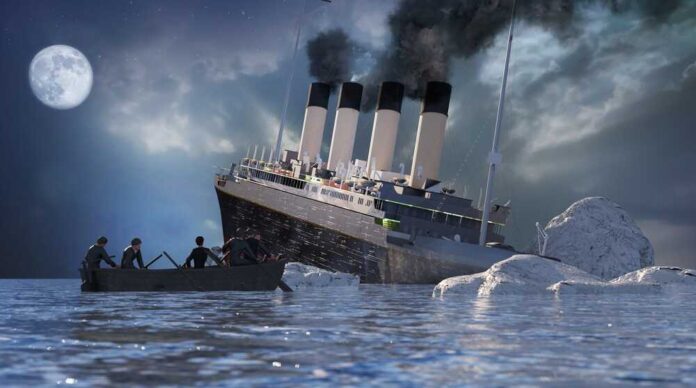
A famous couple who perished on the “unsinkable” Titanic had a strange link to the missing submersible on its way to the ruins.
Jewish American businessman Isidor Straus was a partner in the Macy’s department store with his brother and a member of Congress for a short time. Those who made it off the Titanic alive reported seeing Isidor wait for the ladies and children to get in the lifeboat before he did. It is believed that Ida refused to abandon her husband and remained at his side while the ship sank. The pair was supposedly last seen standing close together as the Titanic sank.
New York Times historical research reveals that the wife of OceanGate’s CEO, Stockton Rush, Wendy, is Isidor and Ida Straus’s great-great-granddaughter. The Strauses were among the ship’s wealthiest passengers when it went down in the North Atlantic in 1912, and James Cameron’s blockbuster film incorporated a brief scene based on their tragic love tale.
In the film “Titanic,” an older couple is shown embracing as water flows like a river underneath the bed they are lying in. The orchestra is playing “Nearer My God To Thee.” Although not named in the film, they are mentioned in the credits.
Isidor and Ida had seven children. One daughter, Minnie, is a direct ancestor of Wendy Rush, whose given name was Weil. According to Joan Adler, the executive director of the Straus Historical Society, Dr. Richard Weil III, Minnie’s grandson, is Rush’s father, as stated by the Times.
As the worldwide hunt for the missing vessel from June 19 continued, the Coast Guard believed that the OceanGate submersible would run out of oxygen by Thursday morning.
U.S. Coast Guard Captain Jamie Frederick said that when a Canadian pilot picked up underwater noise on Tuesday, the search team zeroed in on where the sounds originated. A group of seven people was looking for the Titan submarine using five “surface assets” and two ROVs. The search for the missing submarine also included aircraft and sonar buoys.
The U.S. Navy now says that their instruments picked up the sound of the submersible imploding only hours after it began its descent.













